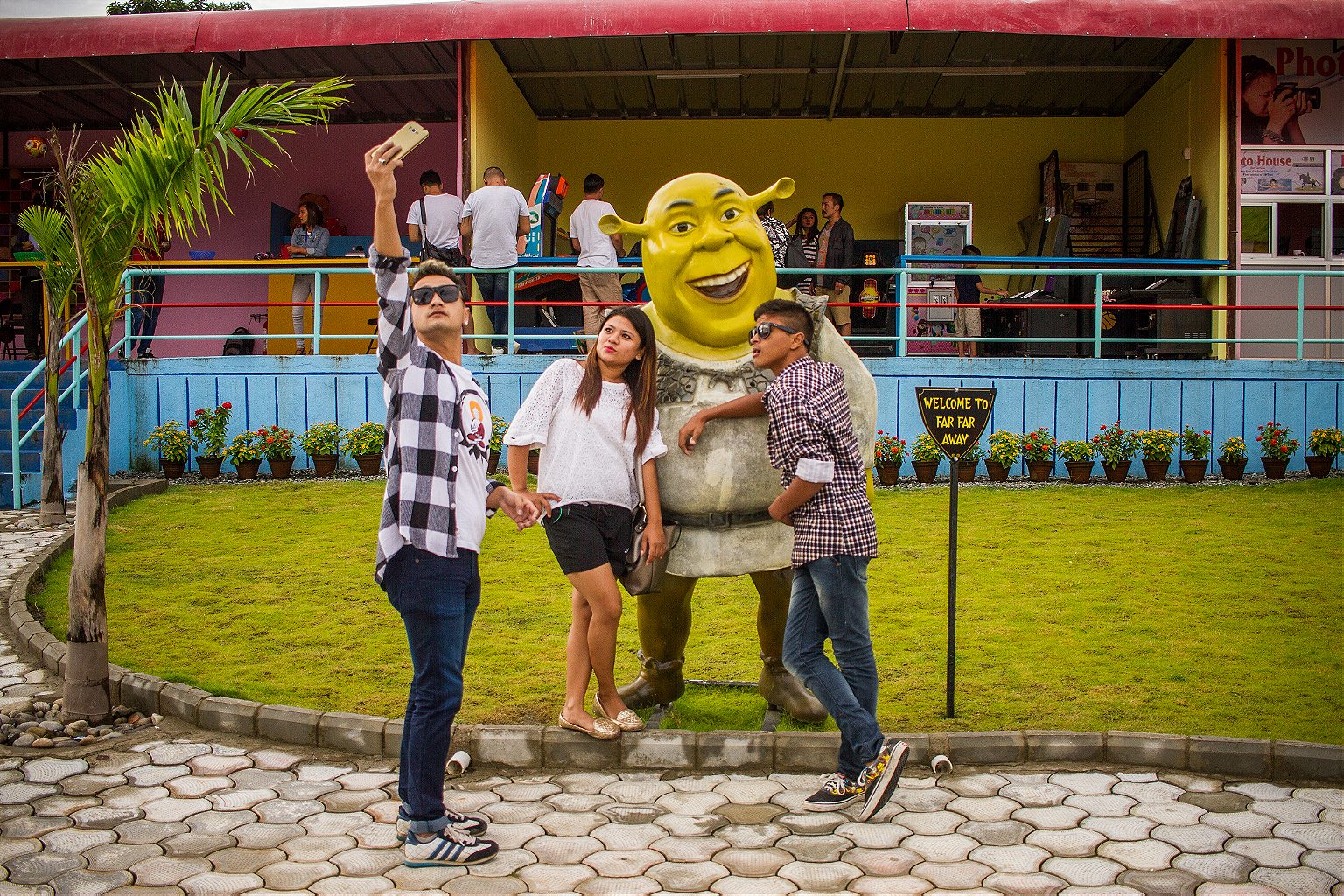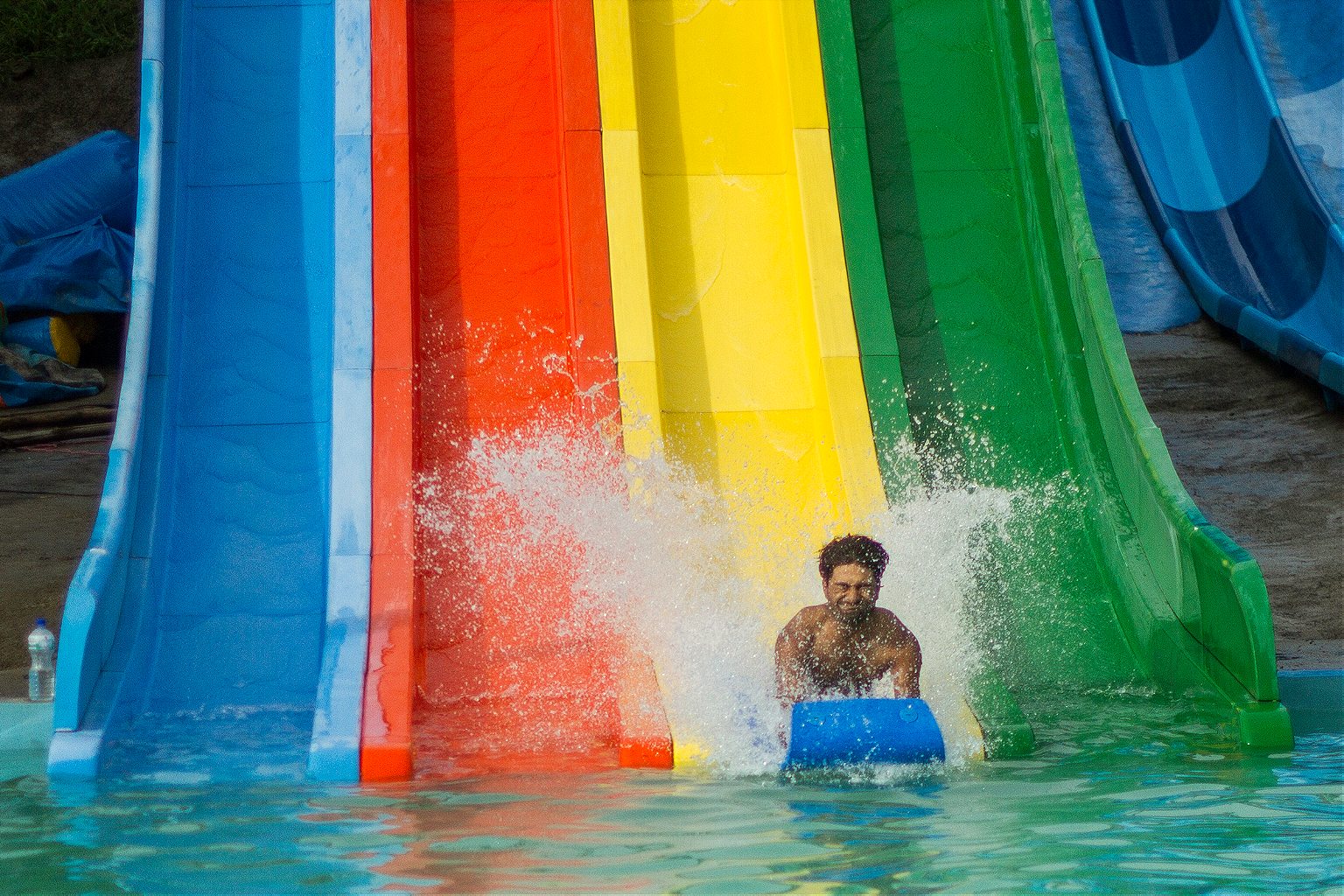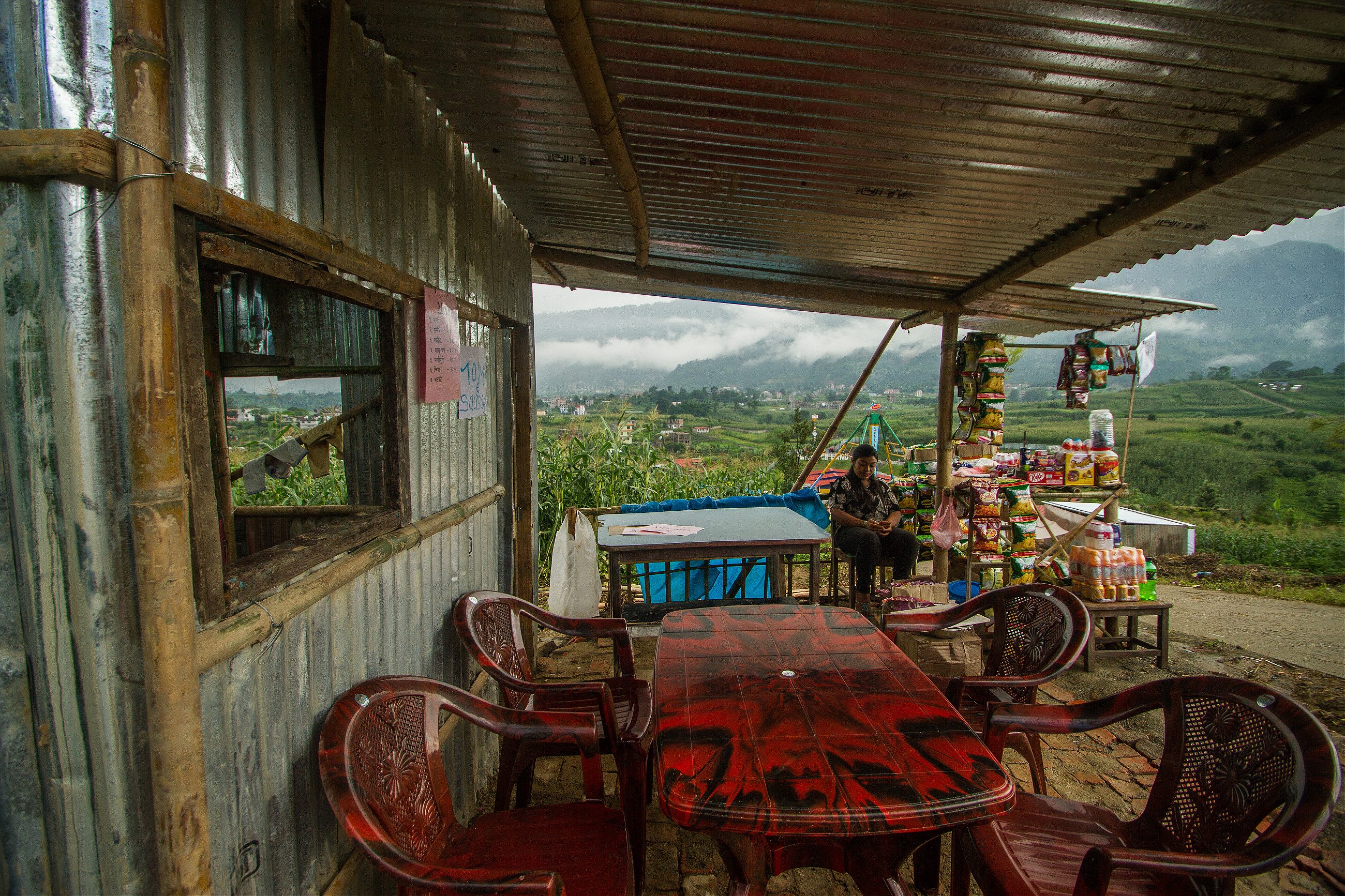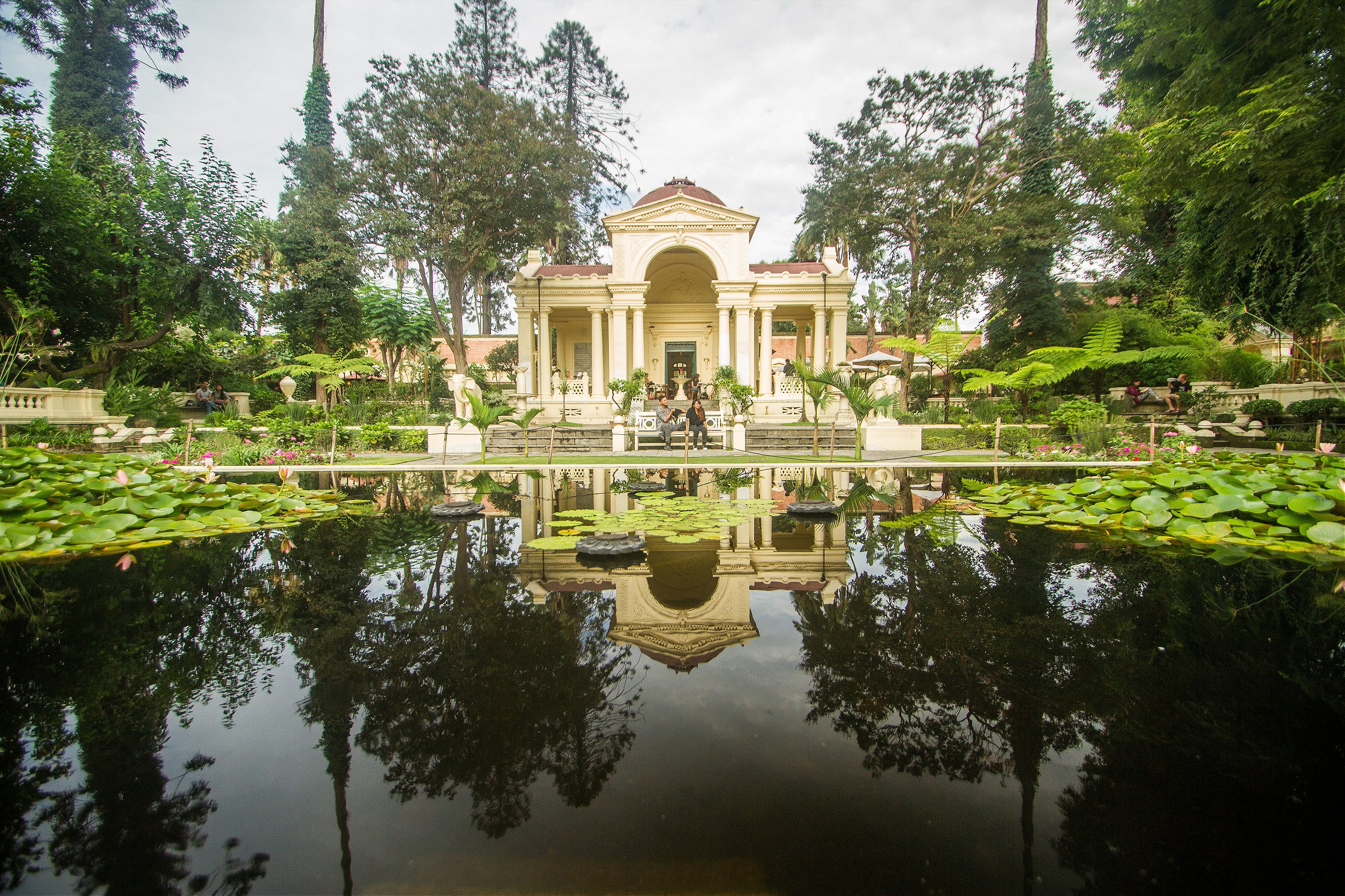Inside Kathmandu’s new amusement park that promises an escape to a land far, far away.
KATHMANDU, Nepal—
On the outskirts of Kathmandu, just as the city fades to fields, thousands of Nepalis stream into Whoopee Land. Whirling rides, water slides, and pop music offer an escape from the chaos of the city. Teenagers and twenty-somethings on motorcycles and scooters pull into the muddy parking lot, while young families navigate their compact cars around the puddles. It’s a school holiday, and many are here for the first time to see the amusement park that opened a few weeks ago.
Inside the gates, statues of characters from Shrek, Avatar, Jurassic Park, and Marvel Comics greet visitors. The sign next to Shrek says, “Welcome to Far, Far Away,” which feels apt. Given Nepal’s lax copyright laws, this is one of a few places in the world where characters from four different production companies can coexist.
This union of dissonant universes is not limited to movie characters: from the gates of the park, a Buddhist monastery, green rice terraces, mud huts, water slides, and the Hulk are all visible.
Inside Whoopee Land, groups of young adults huddle around smart phones and take selfies. “Fashion is really important to young people,” explains 25-year-old Karsang Sherpa, who has come with his friends. “From the dress, from the style, they copy everything in the West.”

In Kathmandu, the flow of foreign money means a growing middle class with a bit of money to spend at the amusement park. Just past the movie characters, a row of carnival games tempts visitors to spend 70 cents to try to win a stuffed animal bear. One of the attendants aims a paintball gun at his co-worker and pulls the trigger. A pop of air makes her jump, but the gun is empty. They both laugh.
Their stalls don’t attract much of a crowd, however. People are here for the rides. “The Frisbee,” a giant, spinning disk with outward-facing seats, and a swinging pirate ship are staples of American carnivals. I pause to consider their safety, but they look relatively new and securely bolted to the ground. “The Ranger,” at the back of the park, invites the most daring. Visitors laugh nervously as they strap their seats. The ride swings back and forth, each time going higher, until the riders are upside down. They scream in that mix of horror and delight universal to amusement parks.
In so much as the crowds at the park enjoy themselves, there is a limit to the enthusiasm for Western culture. Nepalis see the advantages of being a part of the global market, yet hold foreigners with some degree of suspicion. They tout the fact that the country has never been colonized, but their autonomy was only guaranteed by an 1816 treaty with the British East India Company that stipulated the best Nepali soldiers would be recruited into foreign armies, a practice that continues to this day. A policy of isolation ended in 1951 when the king, who had been relegated to a figurehead, formed an ironic alliance with democratic forces to oust the xenophobic and hereditary prime ministers who had ruled the country for 100 years. A flurry of cross-pollination followed. Hippies arrived in search of Shangri-La, Mount Everest enraptured international media, and Nepalis increasingly migrated overseas to find work. Today, money sent home from workers abroad makes up nearly a third of GDP.


Outside of the joyful commercialism of Whoopee Land, tension across Nepal is apparent. The divide between the capital and the country is growing. Victims of the 2015 earthquakes struggle to rebuild, and those who reside in the south of the country are protesting their under-representation in a new constitution passed last year. Accusations abound against the “upper-caste elite” of Kathmandu. While conversation in the city is filled with rumors of political corruption and backroom deals, the rest of the nation feels like an afterthought. More than half of the population live on about $2 a day.
Whoopee Land is located at the junction of these societies, just outside the city. Subsistence farmers peer from their mud huts over the park’s fences into a land of seemingly endless delight. They’re largely welcoming of their new neighbors and the cash it brings to the community. Most of the hired staff are local, and some entrepreneurs are setting up tin shops selling chips and momos, a favorite Nepali snack. For the locals and Kathmandu residents alike, the white, all-capital letters of Whoopee Land, mimicking the iconic Hollywood sign, promise entry to another world.

The “Jurassic Safari” ride is perhaps the premier attraction of the park. A crowd files through a foreboding gateway as dinosaurs roar through a speaker. As they get to the front of the line, visitors are palpably excited. Four at a time pile onto a small raft as a channel of water whisks them into a prehistoric land populated by a T-Rex, a pterodactyl, and a stegosaurus.
“This is like America,” says Arpan Khadka, who just completed high school and is now applying to the University of Southern Mississippi. It’s difficult to get a U.S. study visa, he says. “People like the new. They feel like they aren’t in Nepal but in another place.”
Kathmandu is filling with spaces like this, where those who can afford it, usually tourists and the middle class, can escape. For the last 20 years, Nepalis have flocked to the capital to find work and escape civil war. But infrastructure hasn’t kept up, and the city, ringed by steep hills, is bursting at the seams. Tourists expecting Shangri-La are shocked. While the mountains and villages still possess allure, they must brave the smoke, horns, and chaos of Kathmandu to access the rest of the country. And yet, the city’s image persists as a “tourists’ mystical adventure land” and a proxy-Tibet, as anthropologist Mark Liechty calls it. Visitors have to search a lot harder to find the place of their imagination.
Tourists can embark on the path of enlightenment for $515 a month
On the opposite side of Kathmandu from Whoopee Land, just where the city gives way to the Himalayan foothills, Westerners gather in a Tibetan Buddhist monastery. Gold and red paintings and mystical imagery cover the walls of Kopan Monastery as seekers sit cross-legged on the floor, listening to a monk espouse mindfulness, meditation, and Buddhism. He recounts how a lama healed him of diarrhea with a healing bowl prayer in the mountains of the Solukhumbu, then instructs the seekers to practice mindfulness as they eat lunch, staying silent and focusing their energy on consuming each morsel. The tourists rise and file out of the monastery without a word, wait in line for their rice and lentils, then fletcherize their meal, looking quite serious.
Lama Thubten Yeshe and Lama Zopa Rinpoche started the monastery in 1970 to cater to the crowds of tourists coming to Kathmandu to seek Buddhist spirituality. Today, visitors can embark on the path of enlightenment for $515 a month. They can also sponsor pujas (prayers) conducted by the monks for $100 a pop. They accept Visa and Mastercard, a sign informs visitors.
Despite this mutual fascination, the worlds of the Nepali middle class and foreign tourists rarely intersect. One of the few places that attracts both is the Garden of Dreams. It’s located in the heart of town, just between Thamel, the tourist ghetto, and Durbar Marg, the high-end shopping boulevard.

The garden is a conglomeration of Western culture and Nepali tradition. A member of the ruling family of Nepal with a German first name, Kaiser Sumsher Rana, built it in 1920, paying for it with wealth accumulated from British payments for troops and land, a legacy of the 1816 treaty. Fountains, columns, and pavilions emulate an English neo-classical style, but the garden pays tribute to Nepal’s six seasons and Newari artwork depicting Laxmi, the goddess of wealth.
On sunny afternoons, Nepali youth hide away from the prying eyes of family and neighbors, holding hands and cuddling on the benches. For a few hours, they enjoy the luxuries previously available only to the ruling class. Originally a private garden, it fell into disrepair after the ruling family fell from power and was restored in 2000. Tourists escape the chaos of the city, reading books and chatting in the café.
The entrance to the garden, an inconspicuous doorway on a busy, dirty street, transports visitors to another world. The name of the garden is appropriate: dreams are sold on every corner of this city. Advertisements for study programs in the U.S., Britain, Australia, and Japan fill billboards. The head of technology for the Burning Man festival moved here last year to found a tech startup in a village. Tourists search for mountains and mystics.
In the peace of the garden it all feels plausible, until a traffic jam forms outside and the chorus of horns reminds everyone they are in Kathmandu.
